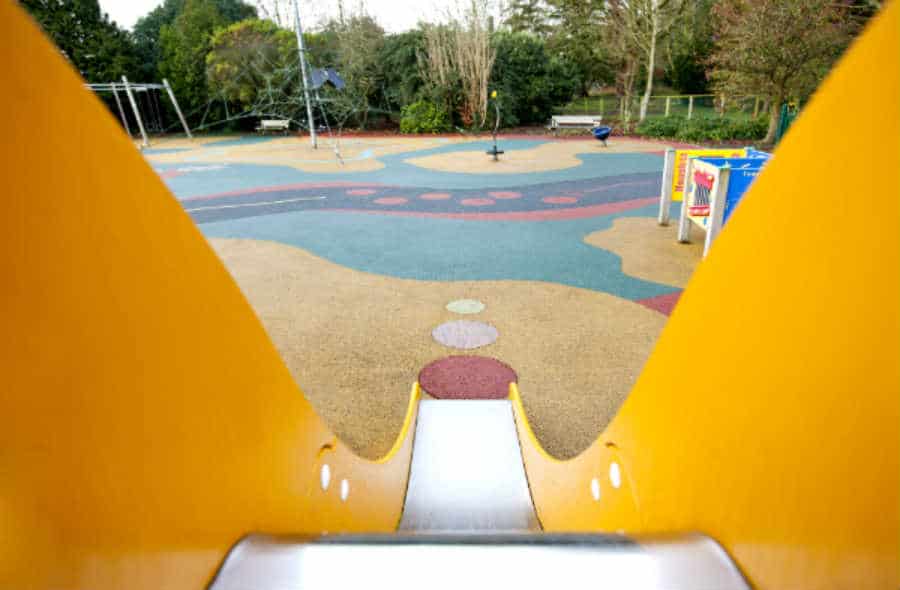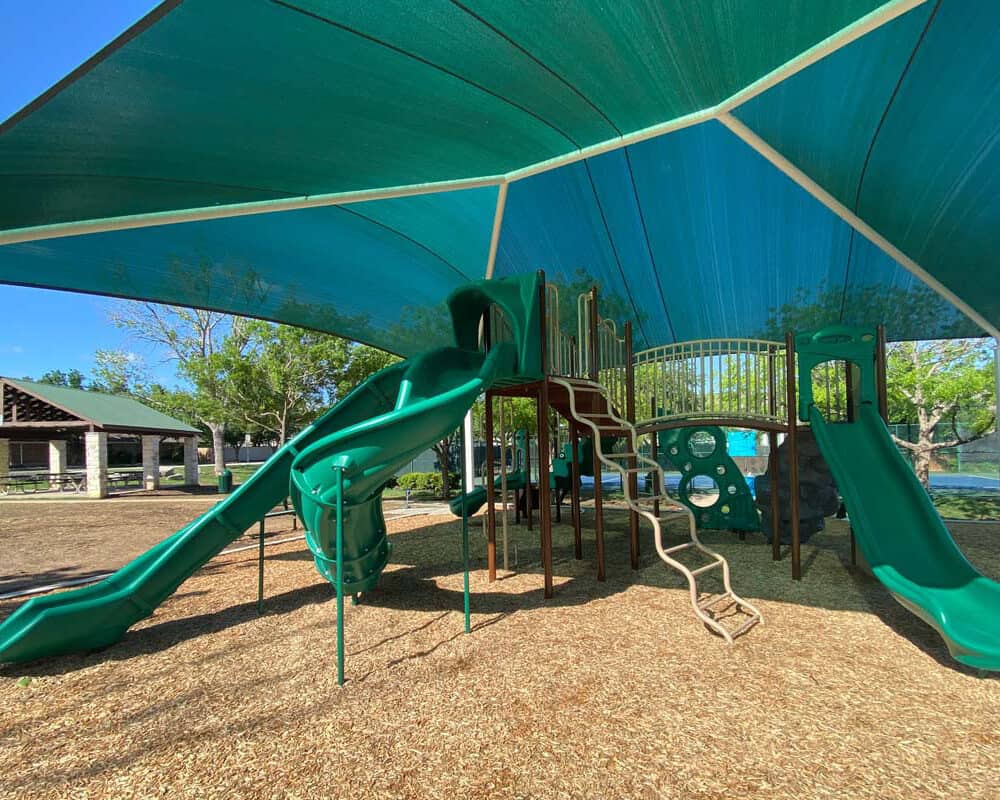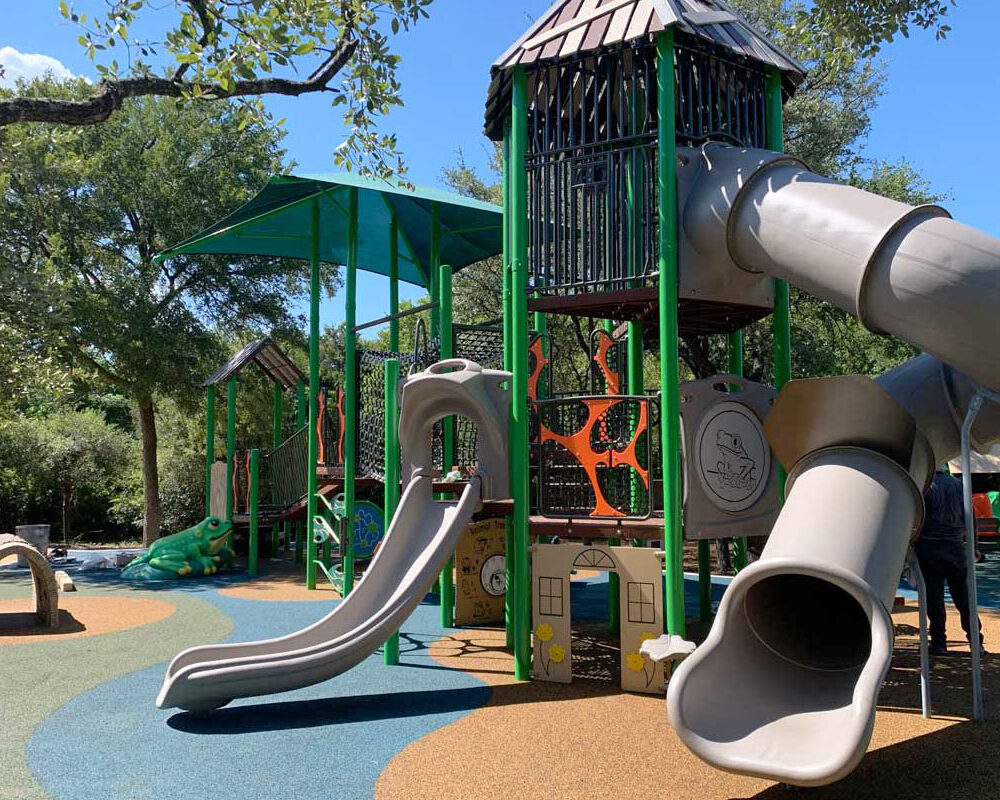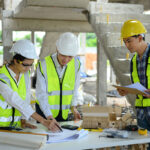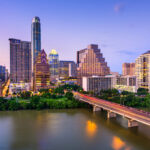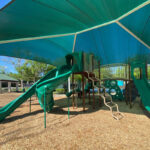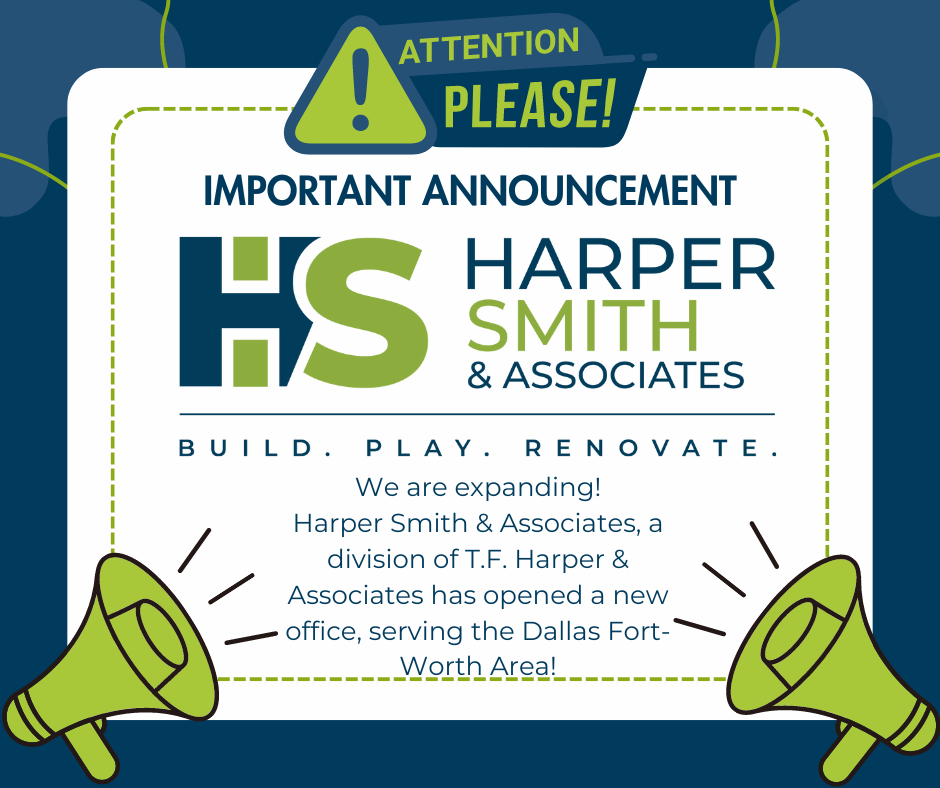You may remember crunching over gravel in the playgrounds of your childhood, but today many safer alternatives are used instead. These materials vary in cost and maintenance requirements. However, they are considered some of the safest playground surfacing materials around today.
Engineered Wood Fiber
Engineered wood fiber is a popular type of playground surfacing material that has been around for a while. It is one of the cheaper loose fill options, and is relatively quick to install. It does have some downsides. Like all loose fill options, it requires occasional refills because material can get kicked out during regular playground activities. Wood fiber also requires a little extra maintenance because it must be turned over occasionally in order to not decompose.
Recycled Rubber
Recycled rubber can be used for a variety of different playground surfacing methods. The least costly of these is recycled rubber loose fill. This surfacing is made of recycled tires, which keeps these discarded items out of landfills. It also has the best impact absorbing properties of loose fill options.
Recycled rubber can also be used for interlocking rubber tiles. The cost of recycled rubber tires is usually somewhere between the cost of loose fill and the cost of poured in place surfaces. One of the major benefits of having a recycled rubber tile playground surface is that if an area is damaged, only the effected squares need to be replaced, and they can be easily removed and reinstalled.
Another option using recycled rubber is a recycled bonded rubber surface. These surfaces have a slightly higher cost than loose fill and tiles, but they require less maintenance throughout the year. These surfaces are generally clean, drain well, and have the potential to last for years without needing more than small repairs.
Poured in Place Rubber
Poured in place rubber is one of the higher costing surface materials available, but one that requires the lowest maintenance. Poured in place rubber surfaces can easily last for many years with minimal maintenance and repair. They also offer a large amount of creative design possibilities, and are the best surface for ADA accessibility.
Synthetic Turf
Synthetic turf playground surfacing is another option. The cost of synthetic turf is usually less than pour in place rubber surfaces. Synthetic turf is similarly low maintenance, and provides the added benefit of giving the playground a natural look similar to grass. Some synthetic turf surfacing is also designed with built-in antimicrobial agents, which can help to protect against bacteria on the surface.
While there are many options, deciding which surfacing material is right for any one playground does not have to be difficult. All of the materials mentioned above, if installed correctly, will make safe, attractive surfaces for playgrounds. Those working on playground projects can consider their budget, how they want the final surface to look, and what level of accessibility is needed in order to determine which material would be best for their project.
If you are interested in a playground installation, contact T.F. Harper & Associates LP located in Austin, TX.

